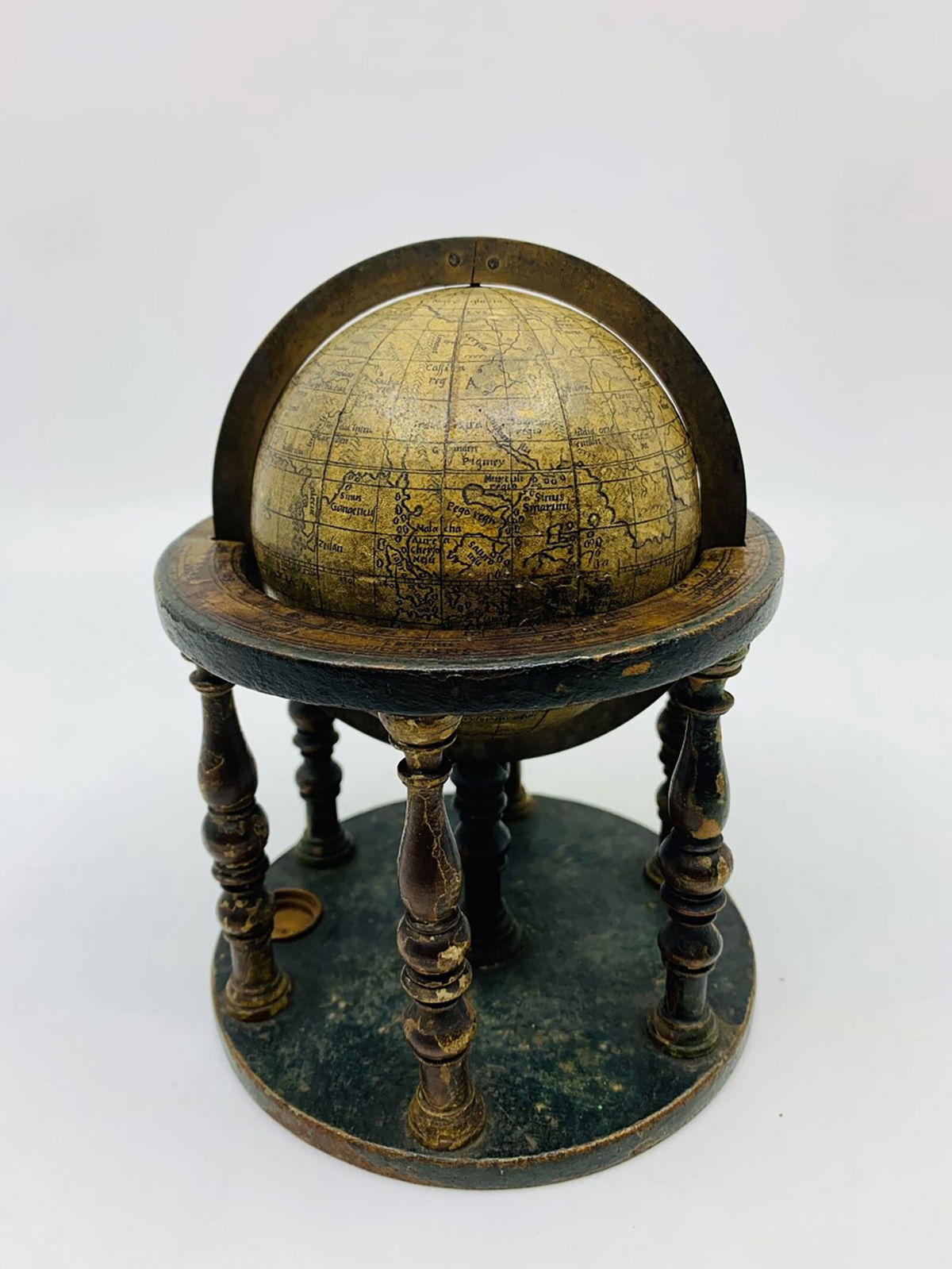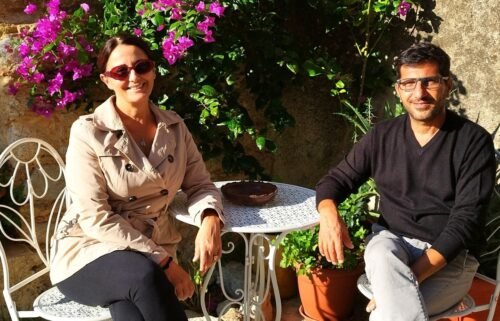‘Priceless’ 16th century globe could be the oldest ever auctioned

The sixteenth century globe could be the oldest one to ever come to auction.
By Lianne Kolirin, CNN
A 16th century globe depicting the world before Australia had even been “discovered” could be the oldest ever to come to auction.
The “priceless” artifact — which features sea monsters, ships and a depiction of Triton, a Greek god of the sea — emerged at a free valuation held by British firm Hansons Auctioneers.
Due to go under the hammer on Thursday, the globe, which measures 3.5 inches in diameter, is thought to be almost 500 years old and had previously belonged to a member of the Monuments, Fine Arts, and Archives (MFAA) section, a Allied unit dubbed the Monuments Men which protected cultural treasures during World War II.
Jim Spencer, head of the Library Auction at Hansons, was “stunned” when a member of the public brought the desktop globe along to the company’s Staffordshire salesroom, Bishton Hall at Wolseley Bridge, for a free valuation.
The vendor was “unsure if the globe was anything of great significance,” according to Spencer.
But research carried out by Hansons revealed that it dates back to circa 1550/60, making it one of the earliest terrestrial globes in existence — and potentially the oldest ever to come to auction. The guide price is set at £20,000-30,000 ($26,443-39,650) but Spencer said it would likely fetch beyond that.
Spencer explained to CNN that the globe is made up of 12 engraved gores.
He said: “Gores are like segments from an orange. They were produced as an engraving or woodcut and printed on paper. These were then glued onto a sphere, usually wooden, to create a globe. It’s more common to see an engraved brass or silver globe from this period, though they are still incredibly rare.
“I think a desktop globe with paper gores like ours, from this period, is unheard of. A sheet of gores alone is very rare and valuable, perhaps £10,000-20,000, but to see them actually used on a globe, with the furniture — wooden cradle etc — is truly remarkable.”
Spencer contacted experts around the world in a bid to find out more about its provenance.
“Most museums said they were unable to help because they don’t have anything like it in their collections, but one put me on the track of French map maker Francois Demongenet who was active in 1550/60,” he said in an article on Hansons’ website.
“One specialist said 16th century globes are nigh on impossible to come across.
“Our globe looks like it could be the earliest ever offered at auction.”
The globe was originally in the collection of Major Edward Croft-Murray, former keeper of prints and drawings at the British Museum, prior to its purchase by the vendor.
“I guess we’ll never know how Major Croft-Murray acquired the globe, but we do know he was one of the ‘Monuments Men’ who rescued all manner of treasures during the war,” said Spencer.
According to the Monuments Men Foundation, Croft-Murray was assigned as an adviser to the MFAA in Italy in 1943.
It is not known how the globe came into his possession, however, Spencer told CNN.
“I guess we’ll never know how he acquired it. Arguably, it is the sort of important object that could’ve been discovered during the chaos of war.”
According to Spencer, the oldest globe in the world is the Erdapfel which dates back to 1492, followed by the 1504 Ostrich Egg Globe which sold at the London Map Fair in 2012.
He said: “The age of our globe firmly places it among the rarest in existence. It’s older than other terrestrial globes in many major museums, including the British Library and British Museum.”
Its rarity makes it impossible to predict how much it will sell for.
“To me, it feels priceless,” said Spencer. “I don’t think it’s possible to say what its monetary value is because I have nothing to compare it with, but I’m guiding at £20,000-30,000 and feel it must surely reach or soar beyond that.”
He added: “People would’ve been wearing ruffs and codpieces when they first handled this globe in Elizabethan England. No European had sighted let alone set foot on Australia.”
Exploration flourished in the 16th century thanks to navigational skills. Japan appears on the globe as “Sipannge,” North America is marked “Devicta ann 1530” and South America is marked “Nova Terra Inventa anno 1492” and “Canibales Tropophagi.”
“It’s amazing to think of all the historical events this delicate little globe has survived,” said Spencer, noting it was made a century before the Great Fire of London in 1666 and had come through two world wars. “To me, it feels like a museum piece.”
The-CNN-Wire
™ & © 2021 Cable News Network, Inc., a WarnerMedia Company. All rights reserved.


